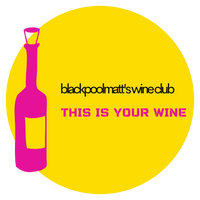bubbles (not champagne!)
Champagne is of course wonderful—and I have some fantastic new wines in the club—but it’s not the only bubbles. In fact, as I’ve noted before, we’re enjoying a golden age of sparkling wine, with amazing wine being made around the world from regions you’ve heard of and regions you haven’t. There’s so much choice it can be hard to know where to start—but let’s try.
One alternative sparkling wine you may have heard of is Cava, most of it made by the Mediterranean coast in Catalunya. Quality is higher than it’s ever been, with a renewed focus on expressing the identity of the place in the wines. Cavas Naveran is an example of a producer who reflects the changing nature of Cava over the last hundred years and more. Their first sparkling wine was made in 1901, and the family concentrated on commercial production in 1984. There’s a strong Catalan identity to the wines: the family name is Parellada, which is one of the three main local grape varieties, and the winery’s name comes from when the founder married the daughter of the Marquis de Naveran. The bottles’ labels are also distinctively regional. But there’s also an international dimension to the wines: “La Dama de Barcelona” is 85% Chardonnay and 15% Parellada. In this blend, it has a resemblance to champagne. The vineyard is planted at 400m altitude for a cooling influence, but the warmth of the Mediterranean climate gives it a more generous fruit profile. It’s aged for up to two years, for a yeasty complexity—overall a wonderful combination of immediacy and maturity.

Italy has so many regions which make sparkling wine and aren’t that well-known outside the country. I hadn’t heard of Alta Langa before I tried a wine by Enrico Serafino. It’s a region in Piemonte, overlapping Barolo, created as a DOCG in 2003 partly because of the efforts of the Serafino winery. The Alta Langa DOCG is solely sparkling wine, with just a handful of producers. The Serafino wine is 80% Pinot Noir and 20% Chardonnay: as with the Naveran Cava, similar to champagne but slightly fruitier. It’s an extremely elegant wine, and half the price of champagne of the same level of quality.
Argentina is not associated with quality sparkling wine, but it certainly exists. The high elevation plantings—1,300m—in Mendoza produce cool growing conditions ideal for both Chardonnay and Pinot Noir and for wines very different from the full-bodied Malbec Mendoza is most known for. Alma 4 is a group of four friends who decided to focus on sparkling wine, and their success has influenced other producers in the region. I love their wines: they are serious, sophisticated, high-acid, but fruity alternatives to champagne. I just got the rosé into the club: so deliciously strawberry.
All three of these producers come from regions warmer than champagne, but with local cooling conditions. They’re made in the same way, mostly from the same varieties. I’m not going to stop drinking champagne—ever—but as those wines get more expensive, I greatly appreciate these high-quality, affordable alternatives.
